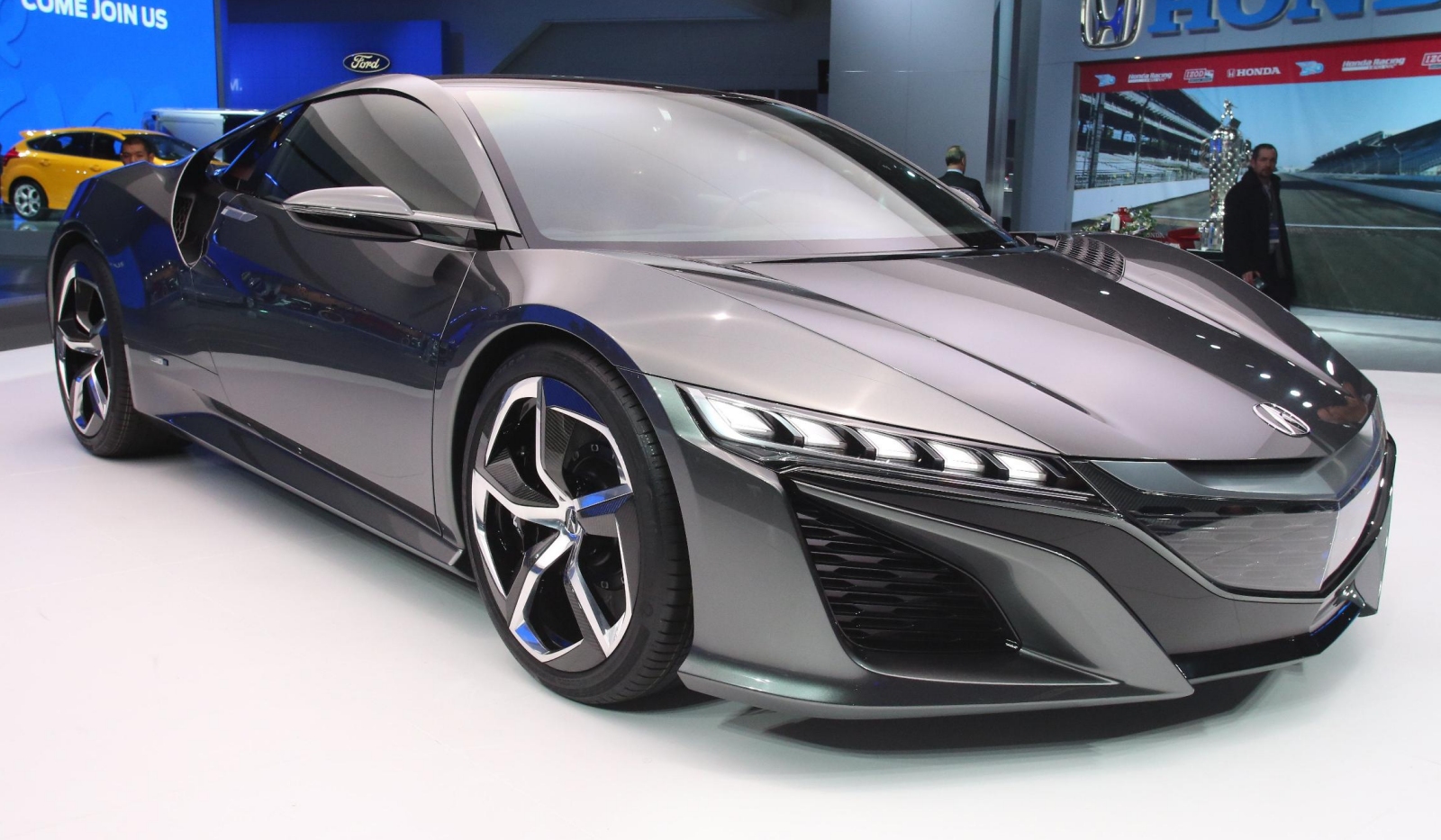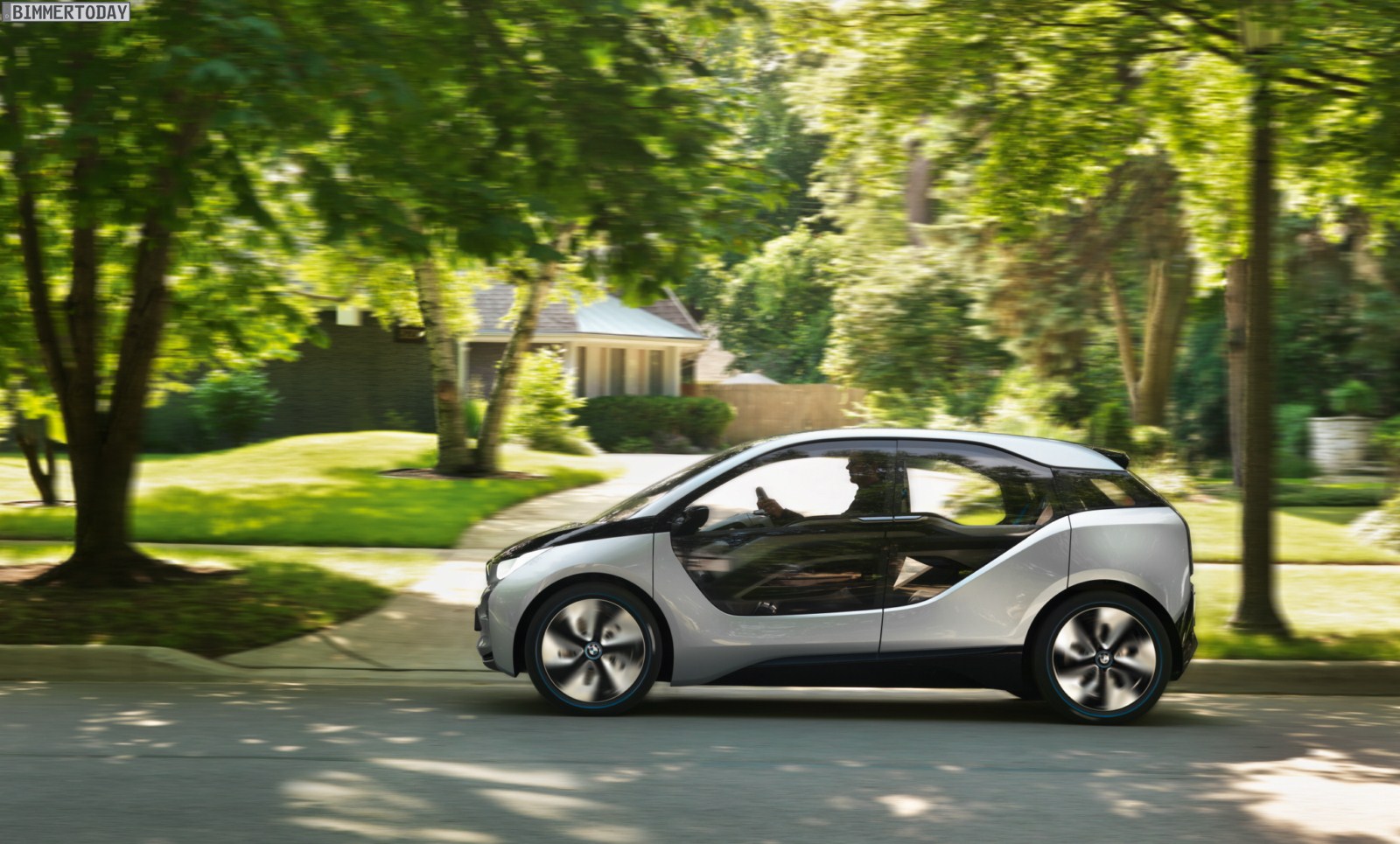
Acura NSX
As the crucial halo car for Honda's premium brand, the mid-engine Acura NSX will combine the magic of the original, aluminum-bodied NSX sports car with the technology of a hybrid whose electric motors power the front wheels and provide for torque vectoring, as well. Think Porsche 918 Spyder at one-seventh the price. The NSX is expected in showrooms by 2015 and will look much like the 2012 concept, which was updated with a sumptuous two-seat interior for the 2013 Detroit show. United States-based designers and engineers are leading development of the sports car, which Acura will assemble in Ohio. The '15 NSX is expected to have a 3.7-liter V-6, two electric motors for the front wheels, and a rear motor providing a combined 480 hp fed through a seven-speed dual-clutch automatic transmission. A 370-hp, 3.5-liter version of this powertrain is found in the all-wheel-drive iteration of the Acura RLX luxury sedan. Late last year, American Honda's president, Tetsuo Iwamura, hinted that since the RLX is also available in nonhybrid form with front-wheel drive, it's possible that we could see a nonhybrid NSX with rear-wheel drive only. True, it would have less power, but it would be lighter and, thus, very true to the original NSX.
When
2015
Why
Acura needs a performance halo car--even more so now than when the original NSX debuted back in 1990.

BMW i3
When you first see it in the flesh, life-size on a real road, the i3 strikes you as an oddly shaped transportation device--and that's notwithstanding the blue-swirl camo on this prototype. The most radical BMW ever conceived, the zero-emissions i3 uses an aluminum chassis, a carbon-fiber body, and an electric motor. Everything about this car is unusual. It's shorter than a Honda Fit, wider than a 7-series, and lower than a Chevy Spark. Unhindered by B-pillars, the roomy cabin is accessed through front-hinged front doors and rear-hinged rear doors. The cockpit is a sweeping dark gray composite sculpture that blends conventional buttons and switches with two color displays. The one in front of the driver houses the digital speedometer, the charge and range indicators, and the so-called dragonfly readout, which is an analog eco-meter. Its red ellipsis signals what BMW describes as debit driving mode, the blue one lights up when you're in credit mode. The bigger screen atop the center console looks like it comes straight from the iDrive parts shelf. The four seats are trimmed either in leather or in a new fabric made from recycled natural fibers. The gear selector, at the two o'clock position, starts the motor with the push of a button, and it selects a gear when you twist the quadrangular end piece. Taking us on our two-hour drive in the i3 is Ulrich Kranz, the grandmaster of Project i and a real devil at the wheel. Immediately, the little plastic-bodied BMW threatens to scalp the narrow, nineteen-inch Bridgestone tires. The sprint from 0 to 40 mph requires only 4.0 seconds. A hand-timed 3.3 seconds later, we pass the 60-mph mark. This is Mini Cooper S performance, but it feels even faster because of the hushed soundtrack. Wafting down the main straightaway of BMW's Munich test center, the i3 slows down a little at 70 mph, but after a mile or so the speedo reads 90 mph. "That's it for the time being," says the senior engineer. "Eventually, we'll go with a 100-mph limit." Surely the range must suffer when an i3 is driven so aggressively? "When you push her really hard, you'll have to find a charge point after about 80 miles, but when you go with the flow, 100 miles is a realistic target." A full recharge takes between three and six hours, but the available fast-charging kit will restore 80 percent of the energy in only sixty minutes. The i3 also will be offered with an optional range extender, a two-cylinder motorbike engine rated at about 35 hp that is mounted close to the rear wheels and is fed by a 2.4-gallon fuel tank. At the end of the straight, a left-hand turn beckons. The sign says 120 kph (75 mph) max, but Kranz barely lifts. The car turns in and the i3 carves through, remaining flat and nicely balanced. Not a single warning light flashes in the process, no stability control interaction, nothing. "It's all about weight distribution and center of gravity," explains Kranz. "The battery pack was placed so that the load is absolutely evenly spread between the axles with two people onboard. At the same time, the energy cells and the electric motor were mounted so low that the i3 truly does hug the road." We turn onto the handling circuit. The car threads through a blind ess-bend as if it were guided by an invisible magnetic induction loop. The i3's most awesome dynamic talent is its incredible grip. Although the snow keeps falling, it doesn't take long to establish a racing line that widens a fraction with every lap. Even at ten-tenths, the i3 remains calm and composed. Push hard and you'll experience some understeer. Lift off in the middle of a tightening bend, and you'll encounter a nudge of oversteer accompanied by the familiar snarl of the stability system. The unassisted steering, at 2.5 turns lock-to-lock, is unexpectedly quick. BMW quotes a commendably tight turning circle of just under 33 feet. Next on the agenda is the torture track. Here, the i3 exhibits a compliant, occasionally even cushy ride, something that a Mini or a 1-series can only dream about. Our guide credits "generous wheel travel, a progressive setup, and low unsprung weight." He adds, "The large wheels tend not to drop into potholes the way smaller-diameter rims would, and the tall sidewalls contribute a special suspension effect of their own." Just before the sun sets, we play on the skid pad. The 60-mph low-friction circle is ideal for simulating high-speed cornering at the limit. Like an M3, the i3 can be easily controlled by steering and throttle. When you give it stick, the typical attitude is a subdued four-wheel drift that becomes a little wavy as you begin to modulate the torque flow and the steering angle. On the tighter 45-mph track covered with freshly fallen wet snow, it's a different story altogether. Here you get enough momentary power oversteer to frighten the passengers, and stability control is indeed required to squash liftoff drama. Speaking of liftoff, it's worth noting that you can step off the accelerator pedal even in the middle of a fast corner. "Liftoff is an essential trait in a car like this," says Kranz. "After all, energy recuperation largely depends on it. In city traffic, you quickly learn to almost never touch the brakes because lifting off generates enough deceleration." Global uncertainty concerning subsidies and user privileges has somewhat trimmed the i3 sales forecast, but the initial production capacity of 30,000 vehicles per year can be increased to 50,000 units if need be. Unlike the electric ActiveE, BMW will sell as well as lease the i3 in America, and it will do so in all fifty states. Of course, two hours aren't enough to properly assess a brand-new and innovative model like the i3. But our first on-the-road encounter with the radical electric BMW was little short of overwhelming.
When
Late 2013
Why
With the i3, BMW puts an exciting spin on green machines.
 BMW M3/M4
BMW M3/M4
Ever since the arrival of the new BMW 3-series sedan (and maybe even before), those who worship the blue-and-white roundel have been waiting for the next M3-and M4, as it turns out. With the standard two-door's change in designation from 3-series to 4-series, the two-door M versions will follow suit: the coupe (illustrated below by a spy artist) and convertible will be called M4; the sedan will remain M3. It's a risky move for a model designation that is held in such esteem, but the car to which the badge is affixed ought to satisfy the faithful. The upcoming M3/M4 is slated to switch from the current normally aspirated 4.0-liter V-8 back to a straight six, albeit one bolstered by twin turbos. Displacing 3.0 liters, its output of approximately 420 hp will be slightly higher than the current 414 hp, but M is not gunning for ultimate bragging rights in this department (leaving that to Mercedes-AMG). Instead, it has focused on reducing weight and improving overall performance-as well as fuel economy. "It needs to be lighter; it needs to be more powerful," M division executives acknowledge. It also needs to have a manual transmission, because the North American market (in particular) demands it-although we don't demand it as much as we used to. On the E46-chassis M3, manuals accounted for 50 percent of sales; for the current-generation E90, it's more like 20 to 25 percent. Still, that's enough to keep it in the mix. "As long as there is demand for a manual," said the division's bosses in a recent interview, "then we [will do] the right thing by offering it." Ergo, we will see a six-speed stick along with an eight-speed dual-clutch automatic, which supplants the current seven-speed. Aluminum (door skins) and carbon fiber (roof, hood, trunk lid, and brake discs) serve the cause of weight reduction. The goal is to bring the weight below 3300 pounds, down from 3700 today. What about an über-M4, akin to AMG's Black Series line of cars? BMW would point out that it has had the M3 GTS/CRT models, but those cars were never sold in the United States. Expect that situation to change next time.When
2014 (coupe, sedan), early 2015 (convertible)
Why
The M3 is an icon for BMW, which makes the name change for the two-doors tricky business.
Know the code
Whereas the 3-series is known internally (and among BMW fanboys) as the F30, the M3 takes the development code F80 and the M4 is the F82
.
No comments:
Post a Comment